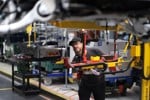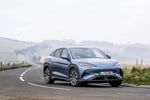The latest meeting of the Fleet200 Executive Club discussed public/home/workplace charging strategies/challenges, and the key considerations for fleets.
This is a summary of their views from the roundtable discussion.
The latest meeting of the Fleet200 Executive Club discussed public/home/workplace charging strategies/challenges, and the key considerations for fleets.
This is a summary of their views from the roundtable discussion.
- The Government has to be willing to invest to get the infrastructure to where it needs to be.
- Home and work charging are key elements – now you have to go somewhere to fill up; with EVs you don’t.
- We have 350kW chargers now, which can charger in 20-30 minutes, but in 3-5 years, the rate of change will result in charging times that are as fast as petrol and diesel today.
- In a few years’ time, you could plug your car into another car to share the charge, similar to some mobile phones today that donate their charge.
- We had drivers who were anti EV because of range concerns that are now taking delivery of them because of BIK and they love them.
- There used to be two issues:
- infrastructure and charging times
- Range anxiety – although in reality, the number of journeys that would exceed the range are very few and probably shouldn’t be done in one go anyway.
- Now the main challenge is charge point anxiety: will they work, will they have space, are they compatible, etc. A lot of charge points aren’t working but we encourage people to call the number and report the fault so it can be fixed for the next person. Another problem is you don’t know in advance if the charger isn’t working.
- There is huge frustration about the price variation between home and public charging. There are regional variations in diesel prices but not as extreme. The motorway network should be seen as ‘opportunity charging’ if you need a short boost to get home.
- Charging price differentials could be linked to power outputs/speed of charging because the suppliers have to make the investment and need a return.
- Standardisation is essential, from apps to payments to connectors.
- It used to be ‘right vehicle, right job’; now it’s ‘right fuel type, right time’
- There isn’t a one-size solution to charging. Rapid chargers are the backbone, but you also need community chargers on street via local authorities.
- One issue is that Government is making the money available, but each local council is responsible for how they use it. It feels like the aspiration isn’t there for some of them. It needs to be a Government-led central project to have national consistency.
- There can be an issue with chargers not charging the car – we tell drivers to wait until the initialisation light comes on.
- Education is needed om understanding the speed at which a car will charge. You might go to a 50kW battery but the car only charges at 22kW. It would useful to open the filler cap and it tells you which charging socket and the charge output.
- Public charge points should include EV-only bays to prevent all the chargers being used by PHEVs.
- We have to make it as easy as possible for people to buy and fill their car – as easy as petrol/diesel.
- We expect to see road charging by 2030 at the latest, when the petrol/diesel ban comes in. Trials will start before that.
Login to continue reading.
This article is premium content. To view, please register for free or sign in to read it.




















Login to comment
Comments
No comments have been made yet.